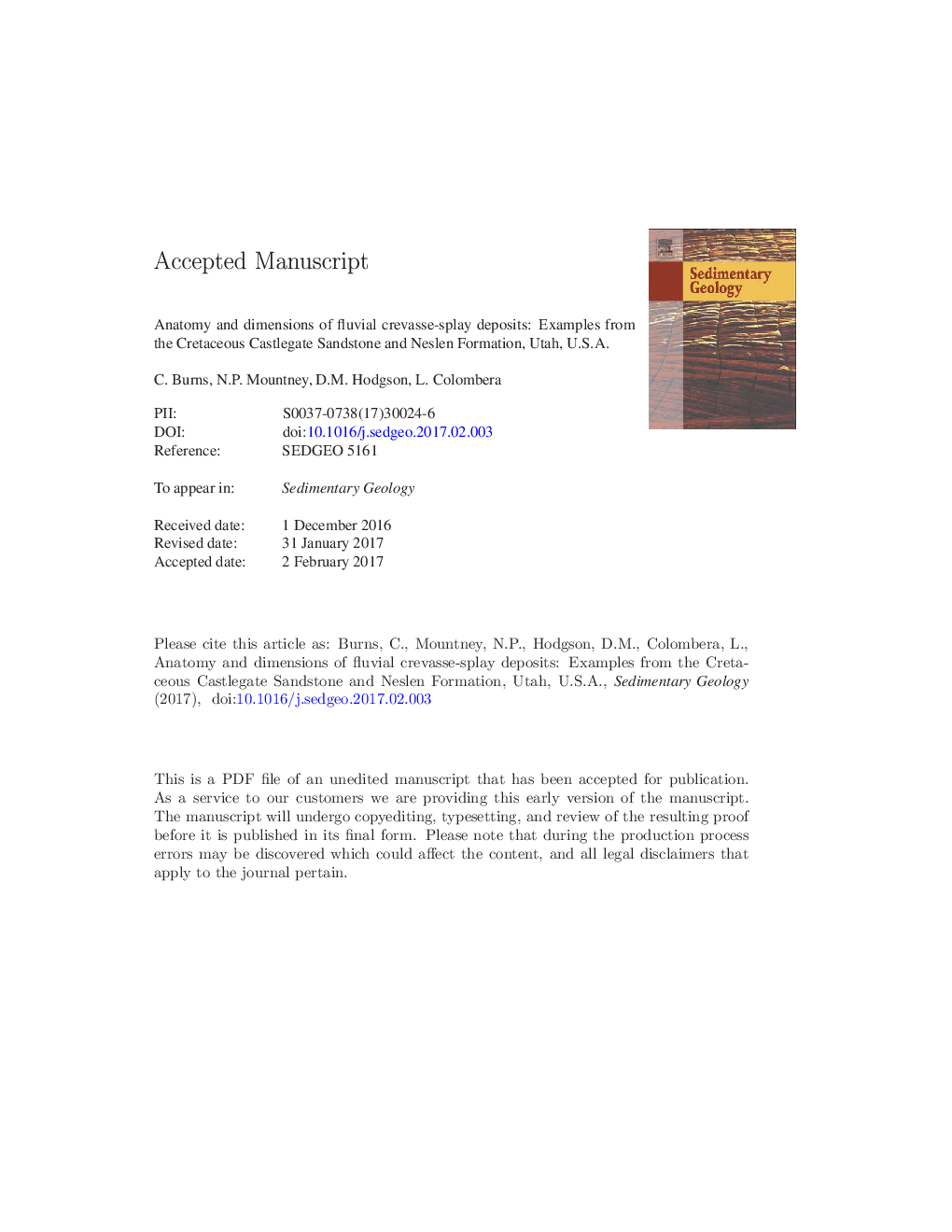| کد مقاله | کد نشریه | سال انتشار | مقاله انگلیسی | نسخه تمام متن |
|---|---|---|---|---|
| 5781406 | 1636012 | 2017 | 72 صفحه PDF | دانلود رایگان |
عنوان انگلیسی مقاله ISI
Anatomy and dimensions of fluvial crevasse-splay deposits: Examples from the Cretaceous Castlegate Sandstone and Neslen Formation, Utah, U.S.A.
دانلود مقاله + سفارش ترجمه
دانلود مقاله ISI انگلیسی
رایگان برای ایرانیان
کلمات کلیدی
موضوعات مرتبط
مهندسی و علوم پایه
علوم زمین و سیارات
فرآیندهای سطح زمین
پیش نمایش صفحه اول مقاله

چکیده انگلیسی
Crevasse-splay deposits form a volumetrically significant component of many fluvial overbank successions (up to 90% in some successions).Yet the relationships between the morphological form of accumulated splay bodies and their internal facies composition remains poorly documented from ancient successions. This work quantifies lithofacies distributions and dimensions of exhumed crevasse-splay architectural elements in the Campanian Castlegate Sandstone and Neslen Formation, Mesaverde Group, Utah, USA, to develop a depositional model. Fluvial crevasse-splay bodies thin from 2.1Â m (average) to 0.8Â m (average) and fine from a coarsest recorded grain size of lower-fine sand to fine silt away from major trunk channel bodies. Internally, the preserved deposits of splays comprise laterally and vertically variable sandstone and siltstone facies associations: proximal parts are dominated by sharp and erosional-based sandstone-prone units, which may be structureless or may comprise primary current lineation on beds and erosional gutter casts; medial parts comprise sets of climbing-ripple strata and small scale deformed beds; distal parts comprise sets of lower-stage plane beds and complex styles of lateral grading into fine-grained floodbasin siltstones and coals. Lithofacies arrangements are used to establish the following: (i) recognition criteria for crevasse-splay elements; (ii) criteria for the differentiation between distal parts of crevasse-splay bodies and floodplain fines; and (iii) empirical relationships with which to establish the extent (ca. 500Â m long by 1000Â m wide) and overall semi-elliptical planform shape of crevasse-splay bodies. These relationships have been established by high-resolution stratigraphic correlation and palaeocurrent analysis to identify outcrop orientation with respect to splay orientation. This permits lateral changes in crevasse-splay facies architecture to be resolved. Facies models describing the sedimentology and architecture of crevasse-splay deposits preserved in floodplain successions serve as tools for determining both distance from and direction to major trunk channel sandbodies.
ناشر
Database: Elsevier - ScienceDirect (ساینس دایرکت)
Journal: Sedimentary Geology - Volume 351, 15 April 2017, Pages 21-35
Journal: Sedimentary Geology - Volume 351, 15 April 2017, Pages 21-35
نویسندگان
C.E. Burns, N.P. Mountney, D.M. Hodgson, L. Colombera,